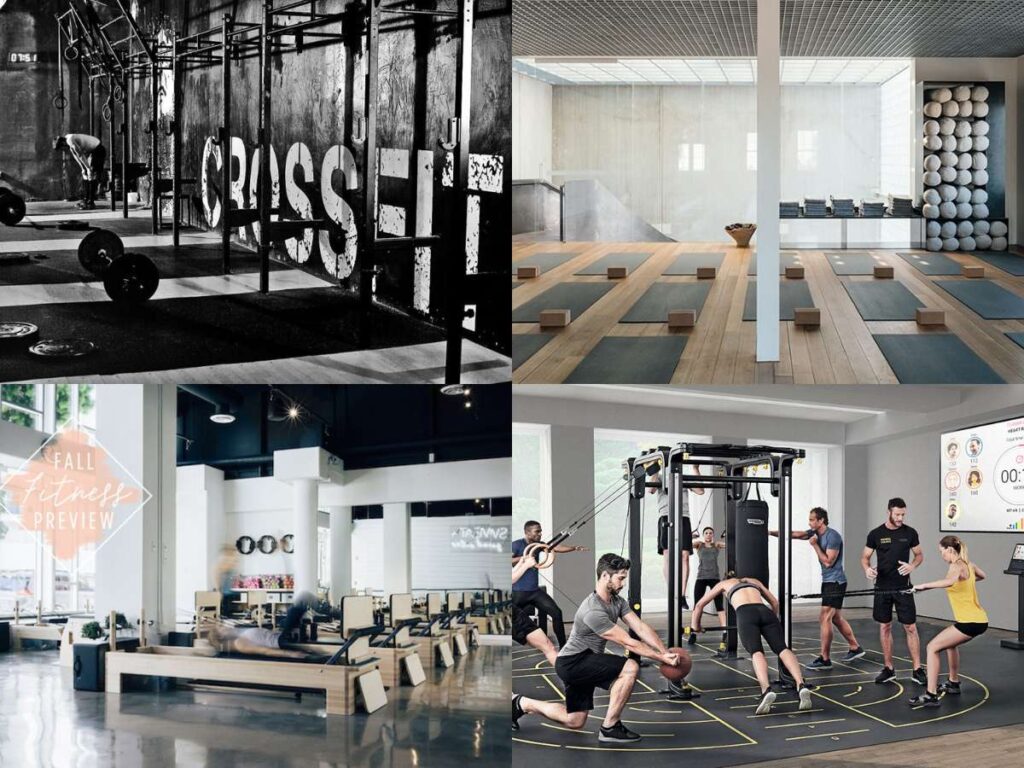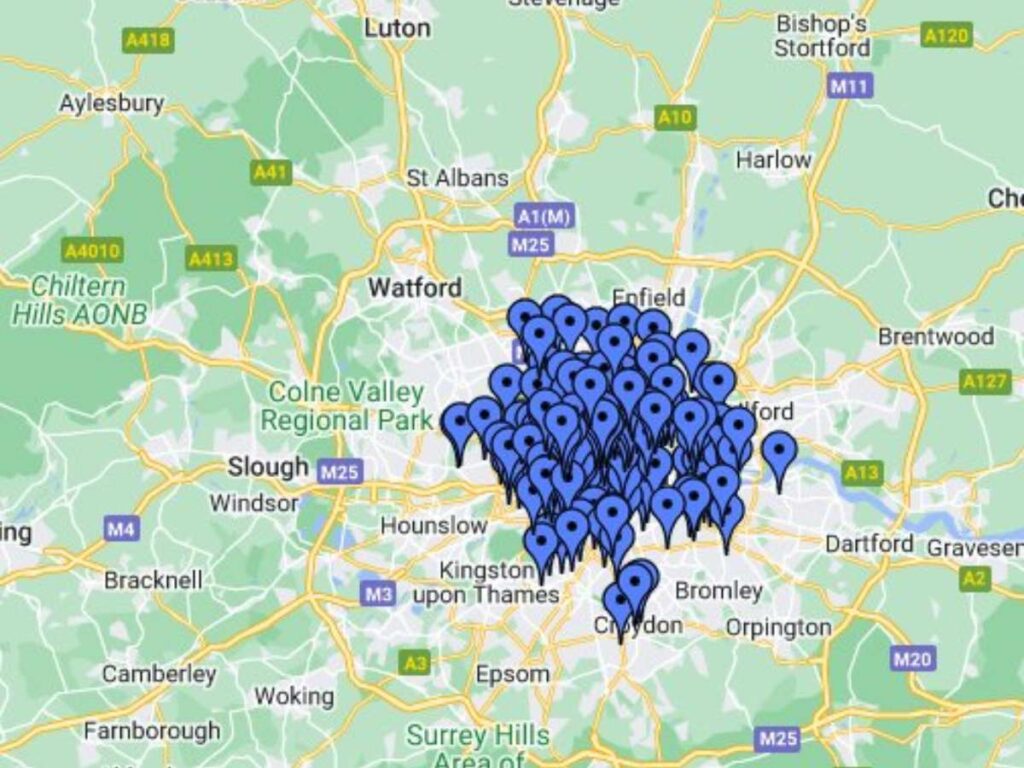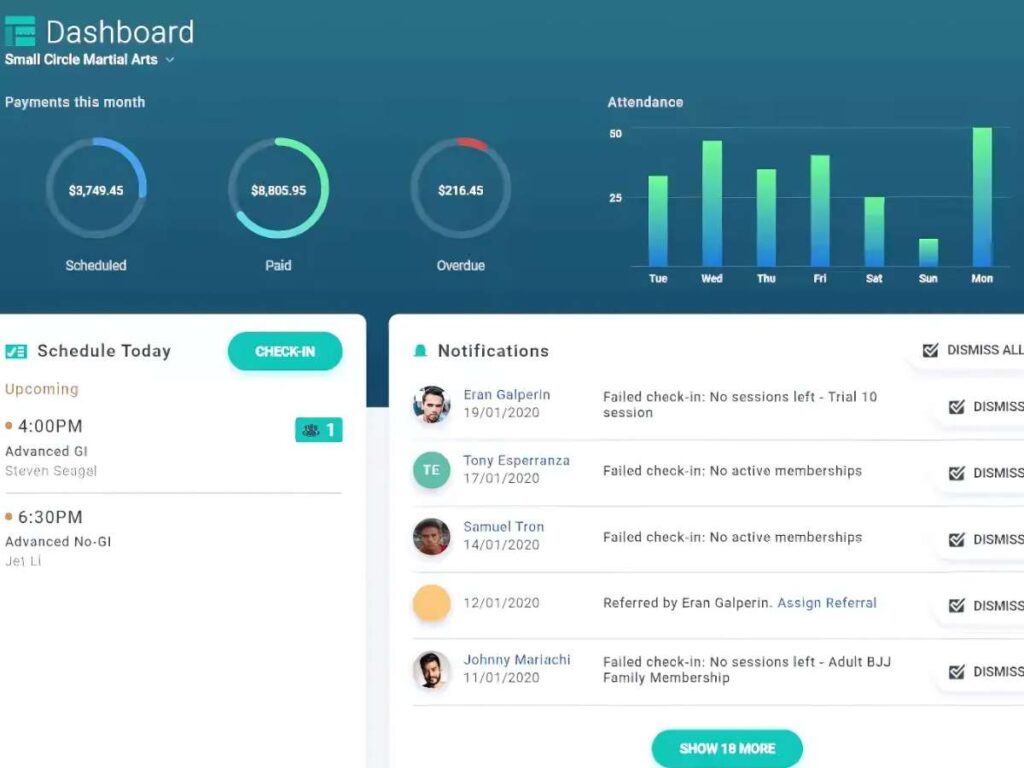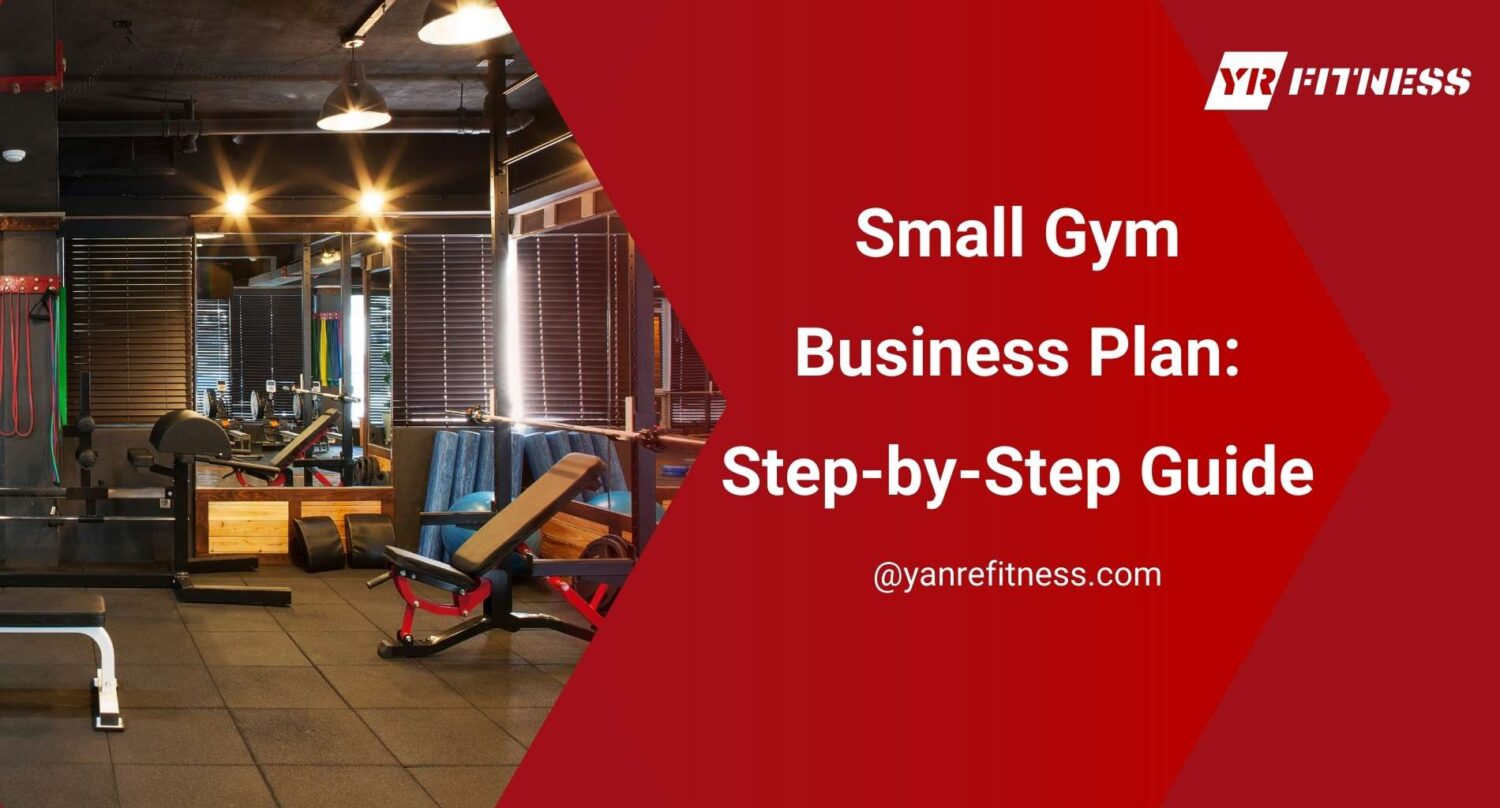I started with a $3,000 budget and a dream to run a small gym in my neighborhood. It took more planning than I thought,but not more money.
The trick? Knowing what matters, and what doesn’t.
I’ve worked with small gym startups and seen what separates the winners from the ones that fizzle out. This guide pulls together those lessons into one plan that works.
You’ll learn how to build your gym business from the ground up: location, setup, pricing, branding, and more.
No jargon. No guessing.
If you’ve got the hustle, this guide will meet you halfway.
Let’s dive in!
Table of Contents
- Quick Step-by-Step Chart
- Step #1: Define Your Gym Concept and Target Market
- Step #2: Conduct Market Research and Competitive Analysis
- Step #3: Outline Your Gym’s Business Model
- Step #4: Create a Detailed Budget and Financial Plan
- Step #5: Choose a Location and Layout
- Step #6: Build Your Equipment and Technology Stack
- Step #7: Plan Your Team and Hiring Strategy
- Step #8: Develop a Strong Marketing and Sales Plan
- Step #9: Prepare for Legal and Administrative Setup
- Step #10: Track Performance and Adjust for Growth
- Conclusion
Quick Step-by-Step Chart
Starting a gym takes more than just great equipment and a cool name. It takes a plan that works from day one. This step-by-step chart gives you a clear path to build, launch, and grow a gym that actually runs like a business.
Step | Title | What It Covers |
1 | Define Your Gym Concept and Target Market | Clarify what kind of gym you’re building and exactly who it’s for. This helps shape your services, pricing, and branding from the very beginning. |
2 | Conduct Market Research and Competitive Analysis | Learn what your audience wants and how your gym will stand out locally. Identify gaps in the market and avoid copying what already exists nearby. |
3 | Outline Your Gym’s Business Model | Choose how you’ll make money, price your services, and structure your offerings. Keep it simple so members understand, and your team can deliver. |
4 | Create a Detailed Budget and Financial Plan | Estimate startup costs, plan monthly expenses, and forecast revenue. A clear financial plan keeps spending on track and builds long-term stability. |
5 | Choose a Location and Layout | Select a space that fits your concept and design it for a smooth member flow. Accessibility, zoning, and layout all affect member satisfaction. |
6 | Build Your Equipment and Technology Stack | Invest in essential equipment and time-saving gym software. Prioritize function over flash and grow your setup based on member habits. |
7 | Plan Your Team and Hiring Strategy | Build a staff that aligns with your brand and creates a strong gym culture. Define roles early and hire people who support your mission. |
8 | Develop a Strong Marketing and Sales Plan | Promote your gym, generate leads, and turn interest into memberships. Good marketing gets attention. Strong sales systems close the deal. |
9 | Prepare for Legal and Administrative Setup | Handle permits, insurance, waivers, payroll, and back-end systems. Set this up early to avoid delays, liability issues, and compliance risks. |
10 | Track Performance and Adjust for Growth | Monitor key metrics, listen to members, and adapt your gym as it scales. Regular check-ins help you fix what’s not working, and double down on what is. |
Step #1: Define Your Gym Concept and Target Market
One of the first things I do when helping set up a gym is define the concept and who it’s meant to serve. If that part is unclear, everything else starts to feel scattered. A strong gym brand starts with knowing what you offer and who you’re offering it to.
Get Specific About Your Gym Type
- Choose a Core Offering: Decide if your focus is strength training, bootcamps, group classes, or wellness services. A clear direction makes planning and marketing much easier.
- Create a Consistent Environment: The vibe in a powerlifting gym should feel very different from a recovery-focused studio. Design, music, lighting, and layout all need to match the experience you’re creating.
- Avoid Trying to Please Everyone: It’s tempting to offer everything, but that only waters down your identity. Focus on what you do well and build around it.
- Think Experience, Not Just Equipment: How someone feels when they walk in affects whether they come back. Layout, flow, and atmosphere matter just as much as machines.
Define the Members You Want
- Visualize Your Ideal Client: Consider their age, fitness goals, job type, and training preferences. This helps you make decisions that speak directly to them.
- Understand What They’re Missing: Think about what’s lacking in other gyms around you. Your gym should offer something they wish they had elsewhere.
- Work Around Their Life: If your audience works traditional hours, your best sessions should happen early mornings, evenings, or weekends. Match your schedule to theirs for better engagement.

Step #2: Conduct Market Research and Competitive Analysis
A lot of gym owners fall into the trap of building something based on what they want, instead of what people in their area actually need. I’ve seen great gym concepts flop simply because they didn’t match local demand. This step may not be exciting, but it’s what makes the rest of your decisions smarter and more effective.
Understand Your Local Audience
- Talk to Real People: Ask potential members what they’re missing from their current gym. A few honest conversations can be more valuable than a thousand online searches.
- Study Their Habits: Are they early risers or evening grinders? Do they prefer group classes or solo workouts? These habits should shape your layout and scheduling.
- Pay Attention to Budget Expectations: Some neighborhoods support premium pricing, while others expect affordability. It’s important to know what people are used to paying.
- Learn What Drives Their Motivation: Whether it’s weight loss, stress relief, or social connection, your marketing should match what they care about most.

Analyze Nearby Competitors
- Tour Other Facilities: Visit local gyms, talk to staff, and watch how members interact with the space. You’ll get a quick feel for what works and where things fall short.
- Dig Into Reviews: Look through online feedback and note common praise or complaints. Trends in reviews can reveal weak spots you can improve on.
- Compare Business Models: Check whether they rely on contracts, flexible memberships, or one-time passes. Knowing their structure helps you position yours better.
- Identify Gaps in Service: Look for things others aren’t offering, like weekend childcare, late-night hours, or recovery tools. Filling even one of those gaps can make your gym stand out.
Step #3: Outline Your Gym’s Business Model
Before I get too deep into equipment or layout, I always work out the business model first. It’s what keeps the lights on and makes sure the gym grows past month three. A clear model tells you how money comes in, what you’re selling, and how it fits into members’ lives.
Keep Your Revenue Streams Simple and Solid
- Stick With a Clean Membership Setup: Flat monthly plans or a couple of tiered options are enough. If people need a chart to understand pricing, it’s too complicated.
- Offer Short-Term Ways to Join: Not everyone wants to commit right away. Class packs, drop-ins, or trial weeks help bring those people through the door.
- Use Auto-Renew Billing: Recurring payments keep cash flow steady. It also makes renewals effortless for both you and the member.
- Make Use of Low-Traffic Hours: I’ve used off-peak discounts or small-group sessions to fill quiet time blocks. That extra use adds up fast.
- Keep Loyalty in Mind: Annual plans or bonus perks for longtime members show appreciation. It’s a small thing that helps with retention.
Add Income Without Overcomplicating the Operation
- Include Training Services: Personal and small-group training offer high returns. You don’t need much space to make them work.
- Sell Useful Branded Gear: Members love picking up things like towels, water bottles, or wraps with your logo on them—just like we recommend in our social media marketing tips for gyms. It builds identity and adds a small but steady revenue stream.
- Run Paid Workshops or Events: I’ve seen gyms earn well from one-off sessions like mobility clinics or intro courses. They’re low risk and a great way to build buzz.
- Offer a Digital Option if It Makes Sense: Online classes or training check-ins are simple to run if you already have the content. It’s an easy way to stay connected to traveling or busy members.
Step #4: Create a Detailed Budget and Financial Plan
The numbers might not be the most exciting part, but they’re what keep everything running. I never start a gym project without getting the budget nailed down first, because once the spending begins, it can get out of hand fast. Knowing where the money is going and when it will come back gives you control from day one.
Set Up Your Startup Budget
- Break Down Initial Costs: I always separate one-time expenses like equipment, lease deposits, and renovations. It’s easier to plan clearly when those costs are listed out up front.
- Include Permits, Insurance, and Licensing: These are often overlooked but can cause major delays. I build them into the early budget to stay ahead of surprises.
- Don’t Forget Pre-Launch Marketing: You’ll need a website, promotional flyers, and maybe some local ads before opening. These are launch essentials, not extras.
- Get Quotes Instead of Guessing: I reach out to vendors to get real numbers. Estimating too loosely almost always leads to unexpected costs.

Map Out Monthly Operating Costs
- List Your Fixed Expenses First: Rent, payroll, and software subscriptions are the non-negotiables. These are the first items I lock into the monthly budget.
- Estimate Utilities and Supplies: Power, water, and everyday cleaning items add up. I build in a buffer to avoid being caught short.
- Plan for Equipment Repairs and Upkeep: Even new equipment will eventually need service. I set aside a bit each month so maintenance doesn’t feel like a hit.
- Keep Marketing in the Monthly Mix: Visibility should never stop after launch. I always keep space in the budget for ads and creative updates.
Step #5: Choose a Location and Layout
I don’t choose gym spaces just because the rent looks good on paper. A low price doesn’t mean much if members struggle to find you, can’t park easily, or don’t feel comfortable once they walk in. Location and layout affect how often people show up, how long they stay, and how likely they are to refer someone else.
Pick a Space That Actually Works
- Go Where Your Audience Already Is: I look for spaces near offices, schools, or residential neighborhoods, depending on who the gym is for. A convenient location makes joining feel like a natural part of their routine.
- Make Parking and Access Easy: If someone has to circle the block or walk several minutes from a bus stop, chances are they’ll move on. Easy access is more valuable than you think.
- Check Visibility from the Street: A hidden second-floor space may save money upfront, but it limits traffic and visibility. I always lean toward locations where people can see the gym without effort.
- Review Noise and Usage Rules: Some landlords are strict about sound or heavy lifting. I go over every lease carefully to avoid problems once operations begin.
Design a Layout That Matches Your Concept
- Map the Flow Before You Build: I sketch how members will move through the gym, from check-in to warm-up and cool-down. When a layout flows naturally, it makes the space feel larger and more welcoming.
- Divide Zones by Activity: Cardio, strength, recovery, and group training should each have a designated space. This keeps things organized and helps members stay focused.
- Include Staff and Storage Space: I always make room for reception, cleaning supplies, and private staff areas. These spaces keep the gym running smoothly behind the scenes.
- Think Long-Term Flexibility: I prefer open areas that can adapt as equipment or programming evolves. Your needs will shift, but your walls probably won’t.

Step #6: Build Your Equipment and Technology Stack
I’ve seen gyms go overboard on equipment in the beginninga, and end up with cluttered floors, unused machines, and money tied up in gear no one touches. It’s better to start lean, invest in the essentials, and expand based on real member habits. The same goes for software: a few good tools can save you hours every week.
Focus on the Essentials First
- Start With What Your Core Audience Needs: If you’re building a strength-focused gym, you’ll need racks, plates, and benches before you think about treadmills. I let the concept guide every purchase.
- Choose Commercial-Grade Equipment: I always look for durability over flash. Brands like YR Fitness offer solid, heavy-use machines that stand up to daily wear and tear without sacrificing quality.
- Leave Room to Grow: I avoid cramming every piece of gear into the space right away. Empty floor space is more useful than unused machines.
- Include Versatile Tools: Items like kettlebells, plyo boxes, and resistance bands serve multiple training styles. They’re space-efficient and budget-friendly.
- Get Feedback Before Buying More: I like to see what members actually use during the first few months. It saves money and avoids regret buys.
Use Tech That Makes the Gym Run Smoother
- Invest in Gym Management Software: Sign-ups, scheduling, and billing should be automated from day one. The right platform handles all of it in the background.
- Use a System With Member Check-In Tools: Whether it’s keycards, barcodes, or an app, I make sure there’s a fast, reliable way to track attendance.
- Offer Digital Class Booking: People expect to reserve classes online or via app. It’s easy to set up, and it helps with planning and capacity limits.
- Track Performance If It Fits Your Model: Some gyms benefit from heart-rate monitors or progress tracking tools. I only include these if they add real value to the member experience.

Step #7: Plan Your Team and Hiring Strategy
Even the strongest gym concept can fall apart if the team isn’t a good match. I’ve seen great equipment and polished branding fall flat because the staff didn’t show up with the right energy. Your team sets the tone every day. They’re the first impression, the daily experience, and the reason people feel connected, or not.
Build a Team That Reflects Your Brand
- Hire for Personality and Attitude First: Skills can be taught, but energy, empathy, and people skills are much harder to train. I always look for people who genuinely like helping others.
- Define Roles Clearly: Even in a small team, clarity matters. Front desk, trainers, and sales staff all need to understand their responsibilities from day one.
- Start Lean, Then Expand: You don’t need a full roster on opening day. I focus on core roles first and bring in part-time or contract help as the gym grows.
- Choose Coaches That Fit Your Concept: The right coach for a powerlifting gym probably isn’t the same one you’d hire for a mobility-focused studio. I make sure their background and style match the gym’s direction.
- Make Sure Everyone Understands the Vision: A strong team culture doesn’t just happen. I take time to explain why we’re doing things a certain way and how each role supports the bigger picture.
Create a Positive Work Environment
- Offer Growth Opportunities: People are more motivated when they can see a path forward. Whether it’s bonuses, education credits, or future promotions, I give them something to grow into.
- Pay Fairly and On Time: This should be a given, but I’ve seen it overlooked. A reliable payroll system keeps everyone focused and builds trust.
- Set Expectations Early: A basic handbook or onboarding sheet saves time and awkward conversations later. I use it to spell out culture, responsibilities, and basic policies.

Step #8: Develop a Strong Marketing and Sales Plan
Marketing and sales are not about being the loudest voice in the room. They’re about being clear, consistent, and showing up in the right places at the right time. I’ve found that the best campaigns begin before the gym opens. The real goal isn’t just getting attention, it’s turning that attention into loyal, paying members.
Get the Word Out Early
- Set Up a Clear, Easy Website: I keep it simple with just the essentials: What you offer, where you are, and how to reach you. People trust a business that looks polished and easy to navigate.
- Use Social to Share the Journey: Posting updates about your buildout and behind-the-scenes progress builds anticipation. It gives your audience a reason to stay engaged until launch day.
- Start an Interest List: I create a basic landing page or use QR codes in local spots to collect emails. Having a warm audience before opening makes promotion much easier.
- Leverage Local Connections: Partnering with nearby businesses helps expand your reach. I’ve shared promo cards in cafés and wellness shops to connect with like-minded locals.
Turn Attention Into Memberships
- Create a Founding Member Deal: Early signups often need a reason to commit. I offer them a limited-time discount or extra perks to make that decision easier.
- Train Your Team to Handle Inquiries: Every staff member should be ready to answer questions and invite people to take the next step. I give them a short guide or script to help with this.
- Track Leads With a Basic CRM: It doesn’t need to be complicated, but I always keep track of names, follow-ups, and trial visits. Staying organized here makes a big difference in conversions.
- Make Signups Effortless: Whether it’s through your website, an app, or in person, I make sure the sign-up process is smooth. The less friction, the more likely people will complete it.
- Follow Up With Everyone: I always send a quick message after tours or trial visits. A short, personal note can be the push that turns interest into action.
Step #9: Prepare for Legal and Administrative Setup
This might not be the most exciting part of the process, but skipping it leads to some of the biggest problems. I always take care of the legal and administrative setup before launch because it’s what protects the business and keeps everything running smoothly. Getting this right early saves stress, avoids delays, and gives you peace of mind once things get busy.
Handle the Legal Foundation
- Register Your Business the Right Way: I make sure the structure fits the plan, whether it’s an LLC, S Corp, or another setup. This is the first real step in building something legitimate.
- Secure Required Permits and Licenses: Each city has its own requirements. I always check zoning, signage, and any health or safety rules before moving forward.
- Get Insurance Before You Move In: General liability, workers’ comp, and trainer coverage should all be in place. I handle this before the equipment arrives to avoid risk.
- Use Solid Member Waivers: I work with a lawyer to make sure my waivers are clear and protective. They set expectations and reduce liability from the start.
Set Up Your Admin Systems
- Choose a Reliable Accounting Setup: I either bring in a bookkeeper or use software like QuickBooks. Clean financial tracking saves time and avoids problems at tax time.
- Organize Staff Payroll Early: Payroll should be ready before hiring starts. That way, onboarding is smooth and staff get paid correctly from day one.
- Create Basic Document Templates: I keep digital copies of contracts, policies, and onboarding docs in a shared folder. It’s a simple way to stay organized once operations kick off.
Step #10: Track Performance and Adjust for Growth
Once the gym is open and running, the work doesn’t stopit shifts. I don’t assume things are working just because people are showing up. The numbers always give a clearer picture, and tracking the right ones helps me make smarter decisions faster. This step is how I keep the business healthy, profitable, and ready to grow.
Measure What Actually Matters
- Watch Member Retention Closely: I check how many people stick around from month to month. A steady loss usually points to something off with pricing, experience, or communication.
- Track Revenue per Member: It’s not just about the number of signups. I also look at how much value each member is bringing through services and upsells.
- Monitor Usage Patterns: I review when the gym is busiest and which areas get the most use. This helps with staffing, class scheduling, and floor plan adjustments.
- Keep an Eye on Expenses: I compare actual spending to the monthly budget. When growth kicks in, it’s easy to overspend if you’re not tracking closely.
Make Adjustments That Keep You Moving Forward
- Review Goals Quarterly: Every few months, I pause to look at progress and make adjustments. Early course corrections are easier than fixing bigger issues later.
- Listen to Members Actively: I take time to ask for feedback, whether it’s through surveys or quick chats. A single good suggestion can lead to a meaningful improvement.
- Test New Ideas in Small Batches: Before rolling out a big change, I try it with one class or one time slot. It lets me measure impact without disrupting everything.
- Refine Your Offers and Pricing: I check every six months to see if my packages and prices still fit the market. Small tweaks can keep things competitive.
- Track Team Performance Too: I don’t just focus on members. I regularly check how the team is doing as well. Solid communication and feedback help keep everyone aligned.
Conclusion
This guide walked you through every part of building a small gym.
From finding your audience to choosing the right layout, every decision matters.
But don’t overthink it. Progress starts small. Just like every great gym once did.
What’s your very first step?
Contact YR Fitness today for high-quality gear and expert support. Let’s build this together.
Related articles:





